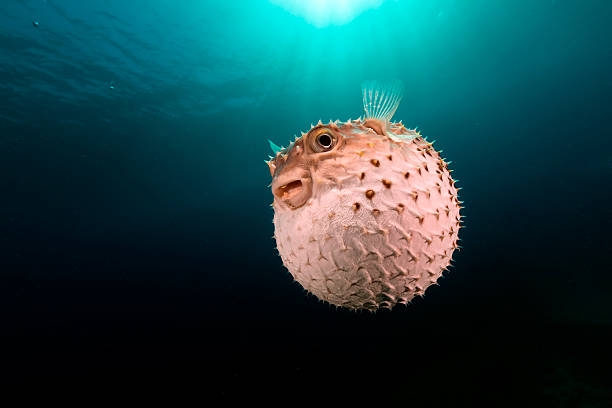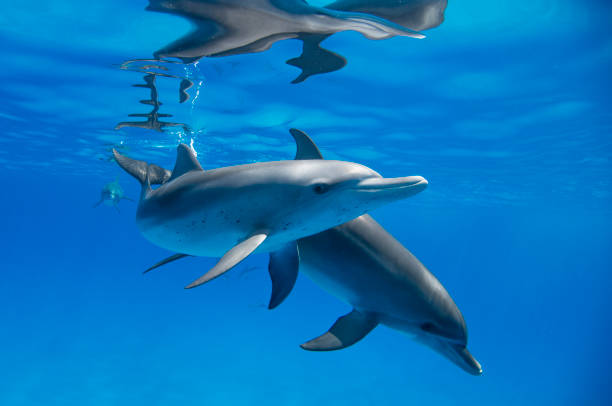Pufferfish: The Inflatable Marvels of the Sea
Beneath the waves, a curious creature captures the imagination of marine enthusiasts and casual observers alike. The pufferfish, with its remarkable ability to inflate to several times its normal size, stands out as one of nature's most intriguing defensive marvels. This article delves into the fascinating world of pufferfish, exploring their unique characteristics, ecological roles, and the surprising ways they've captured human interest.

Evolution of a Unique Adaptation
The pufferfish’s inflation ability is the result of millions of years of evolution. Scientists believe this adaptation emerged as a response to the high predation pressure in marine environments. Over time, pufferfish developed specialized skin that can stretch without tearing, along with a complex system of muscles and ligaments that allow for rapid expansion. This evolutionary journey has resulted in one of the most effective deterrents in the animal kingdom.
Pufferfish Toxicity: A Double-Edged Sword
Beyond their inflation ability, many pufferfish species are notorious for their potent neurotoxin, tetrodotoxin. This toxin, found primarily in the fish’s liver and ovaries, is lethal to most predators and humans. Interestingly, pufferfish don’t produce the toxin themselves but accumulate it through their diet, particularly from bacteria in certain marine organisms they consume. The presence of this toxin adds another layer of defense, making pufferfish one of the most poisonous vertebrates in the world.
Pufferfish in Human Culture and Cuisine
Despite their toxicity, pufferfish have long been a part of human culinary traditions, particularly in Japan where they are known as fugu. The preparation of fugu is strictly regulated and requires specialized training and licensing. A single fish can fetch prices ranging from $100 to over $1000 in high-end restaurants. The fugu market in Japan alone is estimated to be worth over $120 million annually, highlighting the significant economic impact of this dangerous delicacy.
Conservation Challenges and Future Prospects
Like many marine species, pufferfish face threats from overfishing, habitat destruction, and climate change. Some species, such as the Chinese pufferfish, have experienced significant population declines due to demand for their meat and perceived medicinal properties. Conservation efforts are underway to protect these unique creatures, including habitat restoration projects and stricter fishing regulations. Researchers are also exploring the potential medical applications of tetrodotoxin, which could lead to new pain management treatments and create incentives for pufferfish conservation.
The Pufferfish’s Role in Marine Ecosystems
Pufferfish play crucial roles in their ecosystems. As predators of hard-shelled organisms like mollusks and crustaceans, they help control populations of these species. Their unique diet and strong jaws contribute to the health and balance of coral reefs and other marine habitats. Additionally, juvenile pufferfish often serve as prey for larger fish, forming an important link in marine food chains.
Pufferfish in Aquaculture and the Pet Trade
The unique appearance and behavior of pufferfish have made them popular in the aquarium trade. Species like the dwarf pufferfish are particularly sought after, with prices ranging from $20 to $100 depending on the variety. However, keeping pufferfish as pets requires specialized care and knowledge. The aquaculture industry has also shown interest in pufferfish farming, both for the pet trade and for controlled food production. These developments present both opportunities and challenges for pufferfish conservation and management.
In conclusion, pufferfish stand out as one of nature’s most fascinating creations. Their remarkable defense mechanisms, ecological importance, and cultural significance make them a subject of endless fascination. As we continue to study and appreciate these inflatable marvels of the sea, it becomes increasingly clear that their protection and conservation are crucial not only for marine biodiversity but also for the potential benefits they may hold for human society. The story of the pufferfish serves as a powerful reminder of the wonders that exist beneath the waves and the importance of preserving our ocean ecosystems for future generations.





